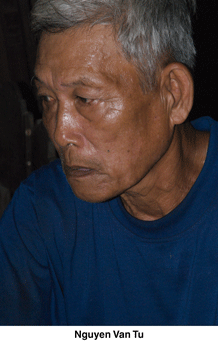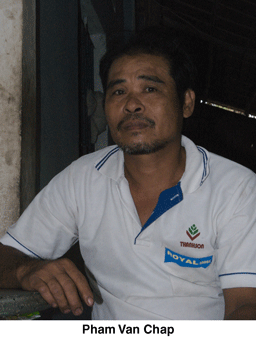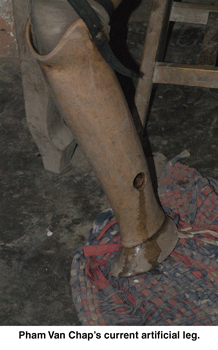On January 30-31, 1968, the Tet holiday, the North Vietnamese and the National Liberation Front (NLF, known to Americans as “the Vietcong”) struck at five of the country’s six largest cities, 34 provincial capitals, 64 district capitals, and numerous military bases. NLF sappers even briefly captured part of the heavily fortified American embassy compound in the center of the South Vietnamese capital, Saigon.
Vietnamese government troops allied to the Americans were badly bloodied and American casualties were high. Fighting continued in parts of Saigon for three weeks and in Hue, the old imperial capital, for almost a month until, as with Fallujah in Iraq in November 2004, most of its buildings were destroyed. To retake major urban areas, air power was called in. In perhaps the most infamous phrase of the Vietnam War, an anonymous U.S. major said of the retaking of Ben Tre, “It became necessary to destroy the town to save it.”
In a wave of TV images of unexpected carnage, all this broke over the American people, who had been assured that “progress” was being made, that, as American commander General William Westmoreland put it, “We have reached an important point when the end begins to come into view.” (Sound familiar?)
The Tet Offensive was a home-front televisual disaster and proved a breaking point in terms of public support for the war effort (despite massive losses on the other side). A shocked Walter Cronkite, the avuncular anchorman of CBS News and an American icon, declared the war “mired in stalemate.” President Lyndon Johnson, who was watching that broadcast, promptly turned to an aide and said, “It’s all over.” And yet the war, already visibly hopeless, would continue through another seven years of carnage as American ground troops were drawn down, while air power was relentlessly ratcheted up. (Again, does any of this sound familiar?)
Now, 40 years later, we are nearing Tet 2008 (February 7th), embroiled in another faraway war in another faraway land where Americans are dying and another people, another society is suffering grievous wounds, once again on an almost unimaginable scale. Once again, an administration is assuring Americans that “progress” is being made, that a corner is being turned. Once again, the planes are being brought in. And once again, the voices we seldom hear are those of the civilians who are suffering. Barely noted in our world while the war is ongoing, they will promptly be forgotten — if the Vietnam experience is any measure — when it’s over (as someday it must be), while Americans focus on the “lessons” to be learned from an “American tragedy.”
Nick Turse and photographer Tam Turse are now in Vietnam meeting with Vietnamese who ended up on the other end of American weaponry (and, in some cases, the Vietnamese versions of present-day Hadithas). Traveling through the distant Mekong Delta, they offer these unforgettable voices from the missing archives of a lost war. Tom
Two Men, Two Legs, and Too Much Suffering
America’s Forgotten Vietnamese Victims
By Nick TurseNguyen Van Tu asks if I’m serious. Am I really willing to tell his story — to tell the story of the Vietnamese who live in this rural corner of the Mekong Delta? Almost 40 years after guerrilla fighters in his country threw the limits of U.S. military power into stark relief — during the 1968 Tet Offensive — we sit in his rustic home, built of wood and thatch with an earthen floor, and speak of two hallmarks of that power: ignorance and lack of accountability. As awkward chicks scurry past my feet, I have the sickening feeling that, in decades to come, far too many Iraqis and Afghans will have similar stories to tell. Similar memories of American troops. Similar accounts of air strikes and artillery bombardments. Nightmare knowledge of what “America” means to far too many outside the United States.
“Do you really want to publicize this thing,” Nguyen asks. “Do you really dare tell everyone about all the losses and sufferings of the Vietnamese people here?” I assure this well-weathered 60-year old grandfather that that’s just why I’ve come to Vietnam for the third time in three years. I tell him I have every intention of reporting what he’s told me — decades-old memories of daily artillery shelling, of near constant air attacks, of farming families forced to live in their fields because of the constant bombardment of their homes, of women and children killed by bombs, of going hungry because U.S. troops and allied South Vietnamese forces confiscated their rice, lest it be used to feed guerrillas.
After hearing of the many horrors he endured, I hesitantly ask him about the greatest hardship he lived through during what’s appropriately known here as the American War. I expect him to mention his brother, a simple farmer shot dead by America’s South Vietnamese allies in the early years of the war, when the United States was engaged primarily in an “advisory” role. Or his father who was killed just after the war, while tending his garden, when an M-79 round — a 40 mm shell fired from a single-shot grenade launcher — buried in the soil, exploded. Or that afternoon in 1971 when he heard outgoing artillery being fired and warned his family to scramble for their bunker by shouting, “Shelling, shelling!” They made it to safety. He didn’t. The 105 mm artillery shell that landed near him ripped off most of his right leg.
But he didn’t name any of these tragedies.
“During the war, the greatest difficulty was a lack of freedom,” he tells me. “We had no freedom.”
A Simple Request
Elsewhere in the Mekong Delta, Pham Van Chap, a solidly-built 52 year-old with jet black hair tells a similar story. His was a farming family, but the lands they worked and lived on were regularly blasted by U.S. ordnance. “During the ten years of the war, there was serious bombing and shelling in this region — two to three times a day,” he recalls while sitting in front of his home, a one-story house surrounded by animal pens in a bucolic setting deep in the Delta countryside. “So many houses and trees were destroyed. There were so many bomb craters around here.”
In January 1973, the first month of the last year U.S. troops fought in Vietnam, Pham heard the ubiquitous sound of artillery and started to run to safety. It was too late. A 105 mm shell slammed into the earth four meters in front of him, propelling razor-sharp shrapnel into both legs. When he awoke in the hospital, one leg was gone from the thigh down. After 40 days in the hospital, he was sent home, but he didn’t get his first prosthetic leg until the 1990s. His new replacement is now eight years old and a far cry from the advanced, computerized prosthetics and carbon fiber and titanium artificial legs that wounded U.S. veterans of America’s latest wars get. His wooden prosthetic instead resembles a table leg with a hoof at the bottom. “It has not been easy for me without my leg,” he confides.
When I ask if there are any questions he’d like to ask me or anything he’d like to say to Americans, he has a quick response. He doesn’t ask for money for his pain and suffering. Nor for compensation for living his adult life without a leg. Nor vengeance, that all-American urge, in the words of George W. Bush to “kick some ass.” Not even an apology. His request is entirely too reasonable. He simply asks for a new leg. Nothing more.
Ignorance Means Never Having to Say You’re Sorry
I ask Nguyen Van Tu the same thing. And it turns out he has a question of his own: “Americans caused many losses and much suffering for the Vietnamese during the war, do Americans now feel remorse?” I wish I could answer “yes.” Instead, I tell him that most Americans are totally ignorant of the pain of the Vietnamese people, and then I think to myself, as I glance at the ample pile of tiny, local potatoes on his floor, about widespread American indifference to civilians killed, maimed, or suffering in other ways in Iraq and Afghanistan.
Even those Vietnamese who didn’t lose a limb — or a loved one — carry memories of years of anguish, grief, and terror from the American War. The fall-out here is still palpable. The elderly woman who tells me how her home was destroyed by an incendiary bomb. The people who speak of utter devastation — of villages laid waste by shelling and bombing, of gardens and orchards decimated by chemical defoliants. The older woman who, with trepidation, peeks into a home where I’m interviewing — she hasn’t seen a Caucasian since the war — and is visibly unnerved by the memories I conjure up. Another begins trembling upon hearing that the Americans have arrived again, fearing she might be taken away, as her son was almost 40 years earlier. The people with memories of heavily armed American patrols disrupting their lives, searching their homes, killing their livestock. The people for whom English was only one phrase, the one they all seem to remember: “VC, VC” — slang for the pejorative term “Viet Cong”; and those who recall model names and official designations of U.S. weaponry of the era — from bombs to rifles — as intimately as Americans today know their sports and celebrities.
I wish I could tell Nguyen Van Tu that most Americans know something of his country’s torture and torment during the war. I wish I could tell him that most Americans care. I wish I could tell him that Americans feel true remorse for the terror visited upon the Vietnamese in their name, or that an apology is forthcoming and reparations on their way. But then I’d be lying. Mercifully, he doesn’t quiz me as I’ve quizzed him for the better part of an hour. He doesn’t ask how Americans can be so ignorant or hard-hearted, how they could allow their country to repeatedly invade other nations and leave them littered with corpses and filled with shattered families, lives, and dreams. Instead he answers calmly and methodically:
“I have two things to say. First, there have been many consequences due to the war and even now the Vietnamese people suffer greatly because of it, so I think that the American government must do something in response — they caused all of these losses here in Vietnam, so they must take responsibility for that. Secondly, this interview should be an article in the press.”
I sit there knowing that the chances of the former are nil. The U.S. government won’t do it and the American people don’t know, let alone care, enough to make it happen. But for the latter, I tell him I share his sentiments and I’ll do my best.
Nguyen Van Tu grasps my hands in thanks as we end the interview. His story is part of a hidden, if not forbidden, history that few in the U.S. know. It’s a story that was written in blood in Vietnam, Cambodia, and Laos during the 1960s and 1970s and now is being rewritten in Afghanistan and Iraq. It’s a story to which new episodes are added each day that U.S. forces roll armored vehicles down other people’s streets, kick down other people’s doors, carry out attacks in other people’s neighborhoods and occupy other people’s countries.
It took nearly 40 years for word of Nguyen Van Tu’s hardships at the hands of the United States to filter back to America. Perhaps a few more Americans will feel remorse as a result. But who will come forward to take responsibility for all this suffering? And who will give Pham Van Chap a new leg?
Nick Turse is the associate editor and research director of Tomdispatch.com. He has written for the Los Angeles Times, the San Francisco Chronicle, the Nation, the Village Voice, and regularly for Tomdispatch.com. His first book, The Complex, an exploration of the new military-corporate complex in America, is due out in the American Empire Project series by Metropolitan Books in March 2008.
Tam Turse is a freelance photojournalist working in New York City. Her photographs have appeared most recently in The Progressive and at TomDispatch.com for which she is the official photographer. More of her photos from these interviews can by viewed by clicking here.
Copyright 2008 Nick Turse



